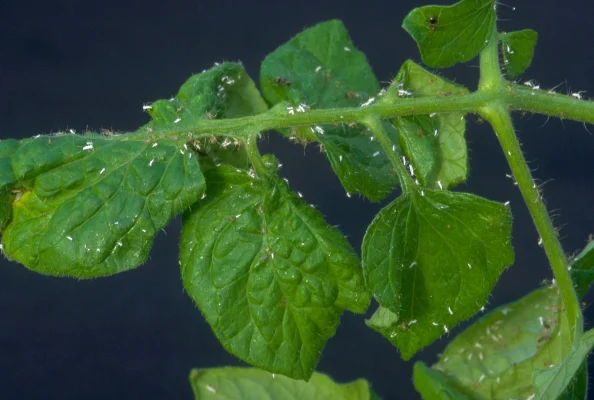Aphids
It is usually possible to see aphid colonies with the naked eye, many species colonise shoot tips, flower buds and the underside of younger leaves
Aphids can cause stunted growth with curled or distorted leaves and can weaken the plant
Many aphids excrete a sticky honeydew on which black sooty moulds can grow
These look like black or brown powder on upper leaf surfaces. They grow on sugar-rich honeydew produced by sap-sucking insects, or occasionally on sugary substances produced by the plant itself. In most cases, sooty mould is a tell-tale sign of an insect infestation.
White cast skins of aphids can accumulate on the upper surface of leaves
Ants may be found climbing plants with aphid colonies, they tend the aphids obtaining honeydew as a reward. The ants will remove aphid predators
Disease causing Species:
Macrosiphum euphorbiae
Major Plants under threat:
Potato
Method of Application:
Soil application, foliar spray,drip irrigation. se the spray solution as a direct spray targeting the pests on the undersides of the leaves.
Intervals:
Apply preferably in the early morning or during the late evening hours. Foliar Spray: Spray on the foliage during evening hours
Dosage:
ABTEC Verticillium is used for foliar spray and soil application. The normal dosage is 20 g per plant.
Soil Application: Mix 3 – 5 kg ABTEC Verticillium with 200 kg organic manure and apply uniformly to moist soil (1 acre). For tree crops mix 20 g with 1 kg organic manure and apply at the base.
Foliar Spray: Mix 10 kg ABTEC Verticillium in 500 litres of water per hectare and spray on the foliage during evening hours. Use the spray solution as a direct spray targeting the pests on the undersides of the leaves.
Drip Irrigation: ABTEC Verticillium can be mixed @ 20g /litre of water. After filtering it can be incorporated into the soil through the drip irrigation system during the pre or post planting stage.
No results found.


